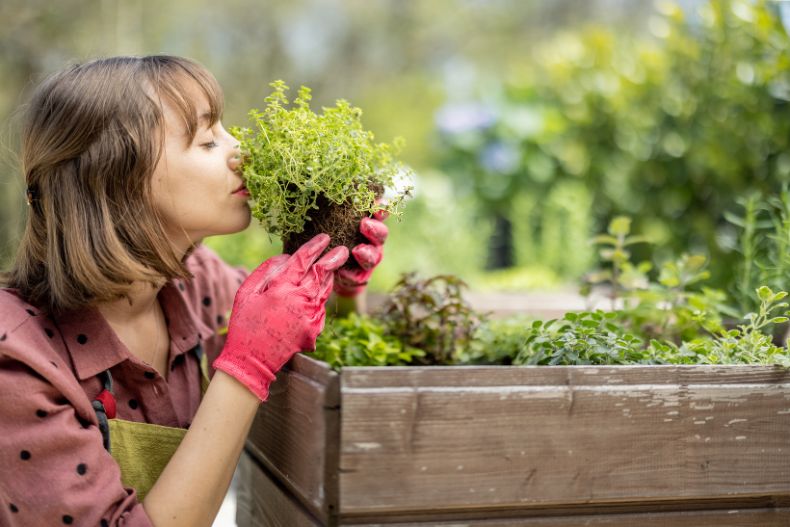
Living sustainably doesn’t mean giving up comfort or style—it’s about making small, intentional swaps that benefit both your household and the environment. Every eco-friendly choice, from reducing waste to conserving energy, adds up to a meaningful impact. Just as browsing through thoughtful visuals on hiddenfacedps.com reveals beauty in simplicity, adopting greener habits uncovers the value of mindful living. By starting with small steps, anyone can transform their home into a more eco-conscious space.
Rethink Everyday Purchases
One of the simplest ways to live greener is by rethinking what you buy. Instead of choosing disposable items, opt for reusable alternatives such as cloth shopping bags, stainless steel straws, and refillable water bottles. When decluttering or searching for affordable eco-friendly options, platforms like can connect you to secondhand goods and local sellers, reducing the need for mass-produced products. This not only saves money but also keeps valuable items out of landfills.
Embrace Emotional Simplicity
Sustainability isn’t only about physical choices—it’s also about adopting a mindset that values simplicity. A less cluttered home often translates to a calmer, more intentional lifestyle. Just as sad shayari captures profound emotions with minimal words, eco-friendly living is about finding depth and meaning in fewer but more valuable possessions. By curating your home thoughtfully, you reduce waste while enhancing emotional well-being.
Energy-Efficient Upgrades
Switching to energy-efficient appliances and lighting is another impactful swap. LED bulbs, programmable thermostats, and ENERGY STAR-rated appliances reduce energy consumption significantly. These changes may require small investments upfront but lead to long-term savings on utility bills and a lighter environmental footprint.

Water Conservation At Home
Eco-friendly living also means being mindful of water use. Installing low-flow showerheads, fixing leaks promptly, and using water-efficient dishwashers or washing machines make a big difference. Even small habits, such as turning off the tap while brushing teeth, can contribute to conservation.
Smarter Home Designs
When planning renovations or choosing décor, opt for sustainable materials like bamboo, reclaimed wood, or recycled glass. Platforms such as Housivo often showcase innovative home design solutions that balance modern style with eco-friendly principles. Incorporating these ideas not only reduces environmental impact but also creates a timeless and elegant living space.
Composting And Recycling
Food waste is a major contributor to greenhouse gases. Starting a compost bin helps convert kitchen scraps into nutrient-rich soil for plants. Additionally, setting up a clear recycling system at home ensures that glass, paper, and plastics are properly processed instead of ending up in landfills.
Eco-Friendly Dining Choices
Sustainable living extends to your dining habits as well. Preparing meals at home with seasonal, locally sourced ingredients reduces your carbon footprint. When dining out, exploring options through a restaurant directory can guide you toward establishments that emphasize eco-conscious practices such as farm-to-table menus or waste reduction policies. Supporting these businesses helps build a greener community while also enriching your lifestyle.
Reduce Single-Use Plastics
Plastic waste remains one of the biggest environmental challenges. Swapping single-use plastics for biodegradable or reusable alternatives is a practical step. Beeswax wraps instead of cling film, reusable produce bags, and stainless-steel lunchboxes are all simple yet powerful swaps.
Green Cleaning Alternatives
Household cleaning products often contain harsh chemicals that harm both health and the environment. Opting for natural alternatives like vinegar, baking soda, and lemon can keep your home fresh without toxic residues. Many eco-friendly brands now also offer refillable cleaning solutions in sustainable packaging.
Transportation Swaps
Home sustainability isn’t limited to what’s inside your walls—it extends to how you move around. Walking, cycling, carpooling, or using public transportation helps reduce emissions. For longer commutes, consider switching to electric or hybrid vehicles as a way to lower your carbon footprint.
Incorporate Indoor Plants
Adding plants to your living space not only improves air quality but also creates a natural sense of calm. Plants like snake plants, peace lilies, and spider plants are particularly effective at filtering indoor air pollutants. They’re also low-maintenance and suitable for all types of households.
Seasonal And Local Living
Choosing seasonal foods and supporting local markets cuts down on transportation-related emissions. It also ensures fresher, healthier produce. Shopping locally fosters community connections and contributes to a more resilient, eco-friendly economy.
Final Thoughts
Eco-friendly living isn’t about making drastic changes overnight—it’s about gradually introducing simple swaps that make life greener and more sustainable. From mindful shopping and water conservation to embracing sustainable design and supporting eco-conscious restaurants, each choice makes a difference. By adopting these practices, you not only create a healthier home for yourself but also contribute positively to the planet. Remember, sustainability is a journey, and every step you take brings you closer to a lifestyle that values balance, purpose, and care for the environment. Even the smallest eco-friendly habits, when practiced consistently, can ripple out to create lasting change for both your home and the planet
